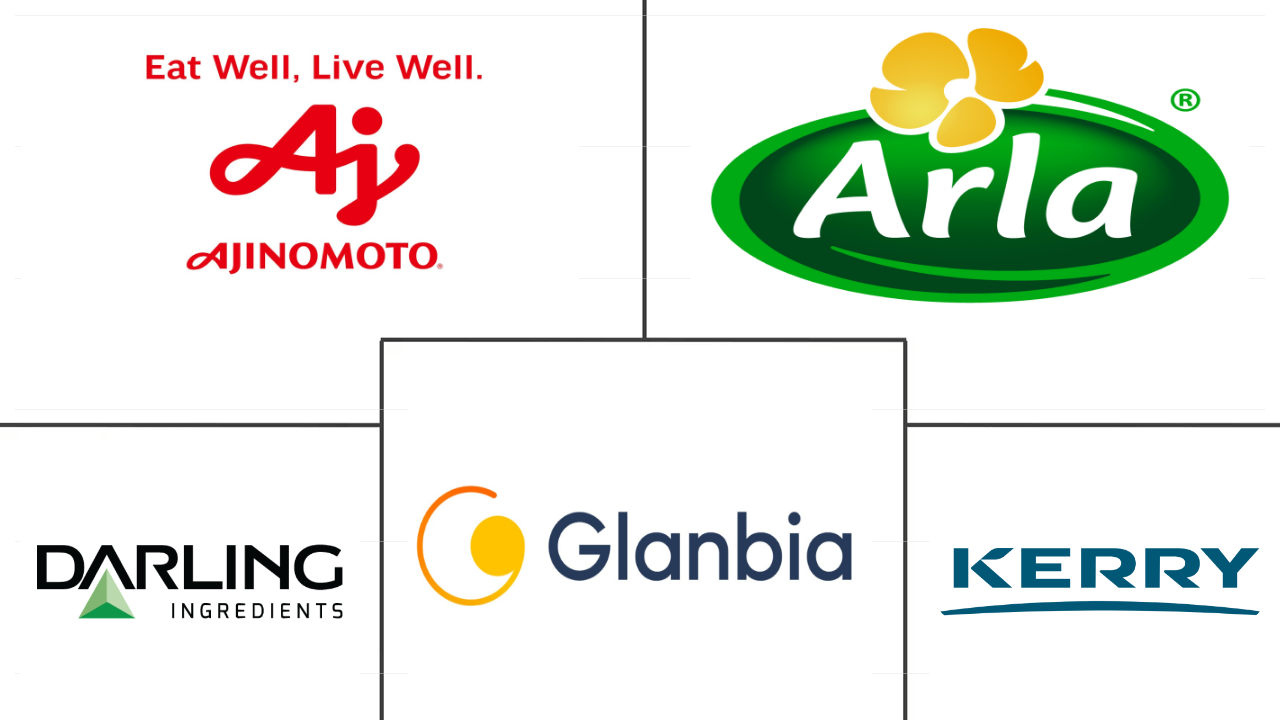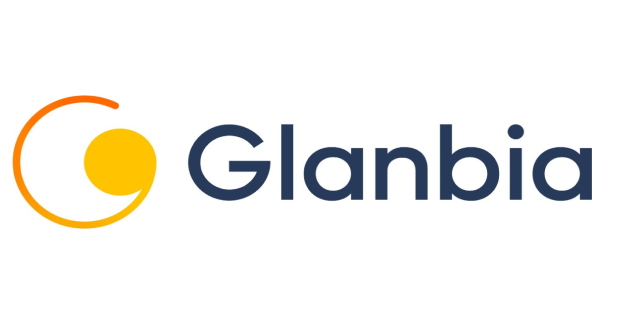Market Size of north america animal protein Industry
| Icons | Lable | Value |
|---|---|---|
|
|
Study Period | 2017 - 2029 |
|
|
Market Size (2024) | USD 2.44 Billion |
|
|
Market Size (2029) | USD 3.07 Billion |
|
|
Largest Share by End User | Food and Beverages |
|
|
CAGR (2024 - 2029) | 4.69 % |
|
|
Largest Share by Country | United States |
|
|
Market Concentration | Low |
Major Players |
||

|
||
|
*Disclaimer: Major Players sorted in no particular order |
North America Animal Protein Market Analysis
The North America Animal Protein Market size is estimated at 2.44 billion USD in 2024, and is expected to reach 3.07 billion USD by 2029, growing at a CAGR of 4.69% during the forecast period (2024-2029).
2.44 Billion
Market Size in 2024 (USD)
3.07 Billion
Market Size in 2029 (USD)
5.23 %
CAGR (2017-2023)
4.69 %
CAGR (2024-2029)
Largest Market by Product Type
41.76 %
value share, Whey Protein, 2023
Constant product developments, rising demand in beverage applications, and high nutrition profiles remained the major factors boosting whey protein demand in the country.
Largest Market by End User
47.48 %
value share, Food and Beverages, 2023
F&B held the largest share due to the shifting focus of consumers from carbonated beverages toward healthier drinks and protein-based snacks, which majorly drove the market.
Largest Market by Product Type
6.07 %
Projected CAGR, Collagen, 2024-2029
The collagen segment's growth is due to innovations in the F&B sector, mainly in beverages and snacks. The surge in demand for grass-fed collagen is also aiding the segment.
Fastest-growing Market by End User
6.78 %
Projected CAGR, Personal Care and Cosmetics, 2024-2029
The sector holds growth opportunities for animal proteins like gelatin and collagen. These proteins are mainly used in nutricosmetic products for sensitive skin.
Leading Market Player
10.16 %
market share, Glanbia PLC, 2021

Glanbia PLC held the largest market share, as it focused mainly on product development as a growth strategy. It has been ramping up its existing range of animal proteins.
Supplements segment holds significant share with growing health conscious consumer across the region, the segment will register y-o-y growth of 4.92% from 2023-2024
- The F&B end-user segment, particularly the snacks sub-segment, drives the market and is expected to register a CAGR of 3.10% by value during the forecast period. Consumer preference for animal protein, in particular, is growing owing to its high nutritional value and functional qualities like foaming, emulsification, gelling, etc., which are sought after by all F&B sub-segments. In 2021, one in four US consumers said that "rich in protein" is a very important quality when choosing which snacks to eat, indicating the high demand for protein snacks. This holds for millennial consumers in particular. Consumers are looking for protein snacks for various reasons, including comfort, energy, muscle support, weight loss, and healthy aging.
- The supplements segment, aided by the sports and performance nutrition sub-segment, is the fastest-growing sub-segment and is expected to record a CAGR of 6.47% by value during the forecast period. This is supported by the growing number of consumers using animal protein to enhance their activities at gyms and fitness centers. Whey protein is the most commonly used animal protein in sports and performance nutrition products. Whey protein contains branched-chain amino acids, a type of amino acid that aids in muscle development.
- On the other hand, infant foods struggled to gain market share over the review period, owing to the prominence of plant protein in the sub-segment, which stemmed from newborns' lactose intolerance and weaker digestive systems. In the United States, about 2.5% of children under the age of three were allergic to milk in 2021, which was a setback for the market.
United states accounted for majority of the share in 2022 due to strong consumption of animal-based meat and dairy products
- Among countries in North America, the United States accounted for the largest market share in 2022 due to the high per capita consumption of animal proteins, especially dairy proteins, which increased from 75.06 to 76.22 g/capita/day in 2018-2019. However, the United States recorded a reduced Y-o-Y growth rate of 1.54% by volume in 2020-2021 due to decreased protein demand from the sports supplement industry. This decrease was attributed to consumers' halted fitness regimes and reduced dependence on protein supplements, resulting in a -3.34% decline in animal protein consumption through the sports nutrition sub-segment.
- The Y-o-Y growth rate of the F&B segment inclined to 1.18% by value in 2022 due to the US food price index for meat, poultry, and fish, which increased by 4.3%, and the cereal and bakery index that increased by 2.9% in 2021.
- However, during the forecast period, Mexico is projected to record the highest CAGR of 5.94% by value, primarily driven by the F&B sector. Government support through initiatives such as the Canada-United States-Mexico Agreement (CUSMA), which went into effect on July 1, 2020, to promote trade, lower tariffs, and increase economic growth, has significantly boosted the animal protein market growth.
- However, Canada accounts for the second-largest market share, observing a significant growth of around 15% by volume from 2016 to 2022. Due to the high domestic production in the country, about 72,360 ton of processed cheese were produced in Canada in 2020, up from 65,320 ton in 2019. Insect proteins are gaining popularity in the animal feed segment and observed the highest Y-o-Y growth rate during the entire review period of 7.90% in 2021 due to their low prices, estimated to reach USD 5.9 per kg in 2022.
North America Animal Protein Industry Segmentation
Casein and Caseinates, Collagen, Egg Protein, Gelatin, Insect Protein, Milk Protein, Whey Protein are covered as segments by Protein Type. Animal Feed, Food and Beverages, Personal Care and Cosmetics, Supplements are covered as segments by End User. Canada, Mexico, United States are covered as segments by Country.
- The F&B end-user segment, particularly the snacks sub-segment, drives the market and is expected to register a CAGR of 3.10% by value during the forecast period. Consumer preference for animal protein, in particular, is growing owing to its high nutritional value and functional qualities like foaming, emulsification, gelling, etc., which are sought after by all F&B sub-segments. In 2021, one in four US consumers said that "rich in protein" is a very important quality when choosing which snacks to eat, indicating the high demand for protein snacks. This holds for millennial consumers in particular. Consumers are looking for protein snacks for various reasons, including comfort, energy, muscle support, weight loss, and healthy aging.
- The supplements segment, aided by the sports and performance nutrition sub-segment, is the fastest-growing sub-segment and is expected to record a CAGR of 6.47% by value during the forecast period. This is supported by the growing number of consumers using animal protein to enhance their activities at gyms and fitness centers. Whey protein is the most commonly used animal protein in sports and performance nutrition products. Whey protein contains branched-chain amino acids, a type of amino acid that aids in muscle development.
- On the other hand, infant foods struggled to gain market share over the review period, owing to the prominence of plant protein in the sub-segment, which stemmed from newborns' lactose intolerance and weaker digestive systems. In the United States, about 2.5% of children under the age of three were allergic to milk in 2021, which was a setback for the market.
| Protein Type | |
| Casein and Caseinates | |
| Collagen | |
| Egg Protein | |
| Gelatin | |
| Insect Protein | |
| Milk Protein | |
| Whey Protein | |
| Other Animal Protein |
| End User | ||||||||||||
| Animal Feed | ||||||||||||
| ||||||||||||
| Personal Care and Cosmetics | ||||||||||||
|
| Country | |
| Canada | |
| Mexico | |
| United States | |
| Rest of North America |
North America Animal Protein Market Size Summary
The North America Animal Protein Market is experiencing a steady growth trajectory, driven by increasing consumer demand for animal protein due to its high nutritional value and functional properties. The food and beverage sector, particularly the snacks sub-segment, is a significant contributor to this market expansion. Consumers, especially millennials, are increasingly seeking protein-rich snacks for various benefits such as energy, muscle support, and healthy aging. The supplements segment, particularly sports and performance nutrition, is the fastest-growing area, with whey protein being a popular choice for muscle development. Despite challenges in the infant food sub-segment due to the prevalence of plant proteins, the overall market is bolstered by the growing use of animal protein in functional foods and the steady demand for traditional protein sources like beef, poultry, and dairy.
In terms of regional dynamics, the United States holds the largest market share, supported by high per capita consumption of animal proteins. However, Mexico is projected to exhibit the highest growth rate, driven by government initiatives like the Canada-United States-Mexico Agreement (CUSMA) that promote trade and economic growth. Canada also shows significant market activity, with a strong domestic production of dairy and meat products. The market is characterized by a fragmented landscape with key players such as Ajinomoto Co. Inc., Arla Foods amba, Darling Ingredients Inc., Glanbia PLC, and Kerry Group PLC. Innovations in product offerings, such as new protein shakes and micellar casein isolates, further indicate the dynamic nature of the market, catering to evolving consumer preferences and dietary trends.
North America Animal Protein Market Size - Table of Contents
-
1. MARKET SEGMENTATION (includes market size in Value in USD and Volume, Forecasts up to 2029 and analysis of growth prospects)
-
1.1 Protein Type
-
1.1.1 Casein and Caseinates
-
1.1.2 Collagen
-
1.1.3 Egg Protein
-
1.1.4 Gelatin
-
1.1.5 Insect Protein
-
1.1.6 Milk Protein
-
1.1.7 Whey Protein
-
1.1.8 Other Animal Protein
-
-
1.2 End User
-
1.2.1 Animal Feed
-
1.2.2 Food and Beverages
-
1.2.2.1 By Sub End User
-
1.2.2.1.1 Bakery
-
1.2.2.1.2 Beverages
-
1.2.2.1.3 Breakfast Cereals
-
1.2.2.1.4 Condiments/Sauces
-
1.2.2.1.5 Confectionery
-
1.2.2.1.6 Dairy and Dairy Alternative Products
-
1.2.2.1.7 RTE/RTC Food Products
-
1.2.2.1.8 Snacks
-
-
-
1.2.3 Personal Care and Cosmetics
-
1.2.4 Supplements
-
1.2.4.1 By Sub End User
-
1.2.4.1.1 Baby Food and Infant Formula
-
1.2.4.1.2 Elderly Nutrition and Medical Nutrition
-
1.2.4.1.3 Sport/Performance Nutrition
-
-
-
-
1.3 Country
-
1.3.1 Canada
-
1.3.2 Mexico
-
1.3.3 United States
-
1.3.4 Rest of North America
-
-
North America Animal Protein Market Size FAQs
How big is the North America Animal Protein Market?
The North America Animal Protein Market size is expected to reach USD 2.44 billion in 2024 and grow at a CAGR of 4.69% to reach USD 3.07 billion by 2029.
What is the current North America Animal Protein Market size?
In 2024, the North America Animal Protein Market size is expected to reach USD 2.44 billion.

